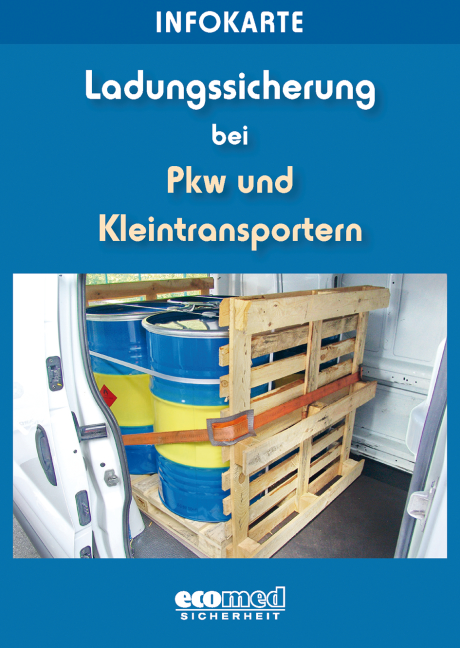
The ideal ‘cheat sheet’ for securing loads in vans! 10 pages, format 10.5 x 14.8 cm The load securing info card shows the most important points to be observed when securing loads in cars and vans in the smallest possible space in words and pictures. - For drivers, shippers and vehicle owners - 10 pages, fanfold format - Explanation of the use of lashing and auxiliary equipment - What does correct load securing look like? - Tables for calculating the number of straps for tie-down and diagonal lashing methods Packaging unit 10 pieces Quantity prices on request
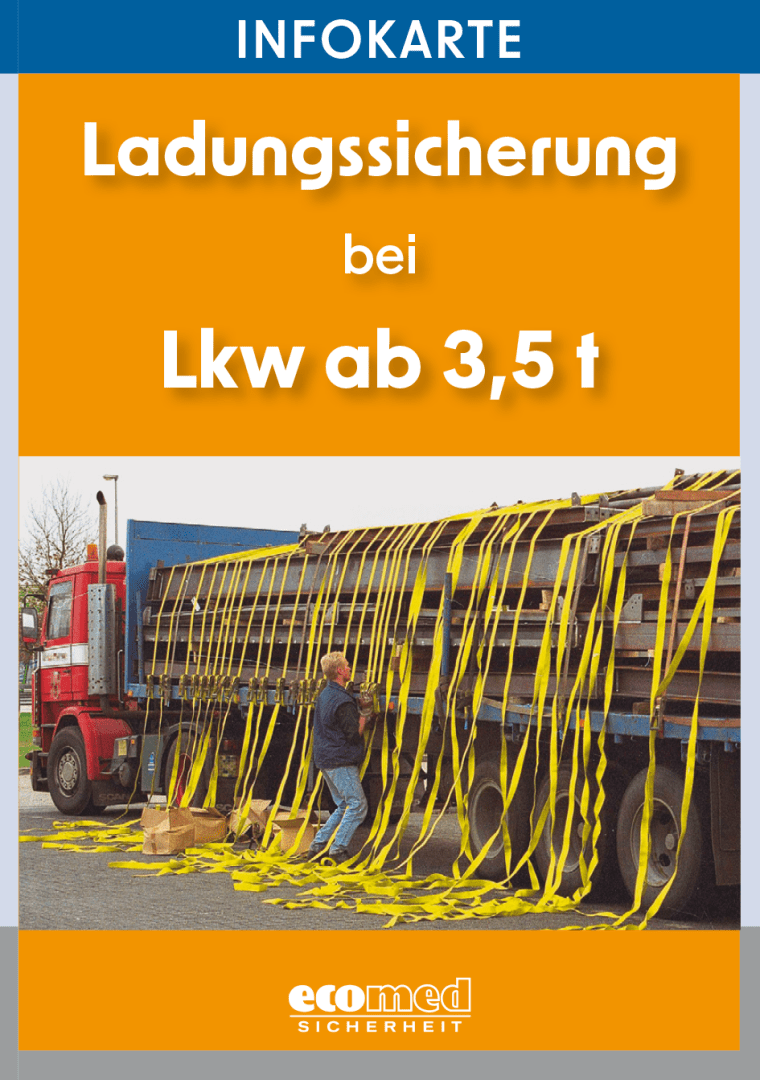
The ideal ‘cheat sheet’ for securing lorry loads! 10 pages, format 10.5 x 14.8 cm The load securing info card shows the most important points to be observed when securing loads in the smallest possible space in words and pictures. This compact guide is intended for those who are responsible for securing loads, i.e. drivers, loaders and vehicle owners. - 8 pages, fanfold format - Explains the use of lashing and auxiliary equipment - What does correct load securing look like? - Tables for calculating the number of straps for tie-down and diagonal lashingPackaging unit 10 pieces Quantity prices on request
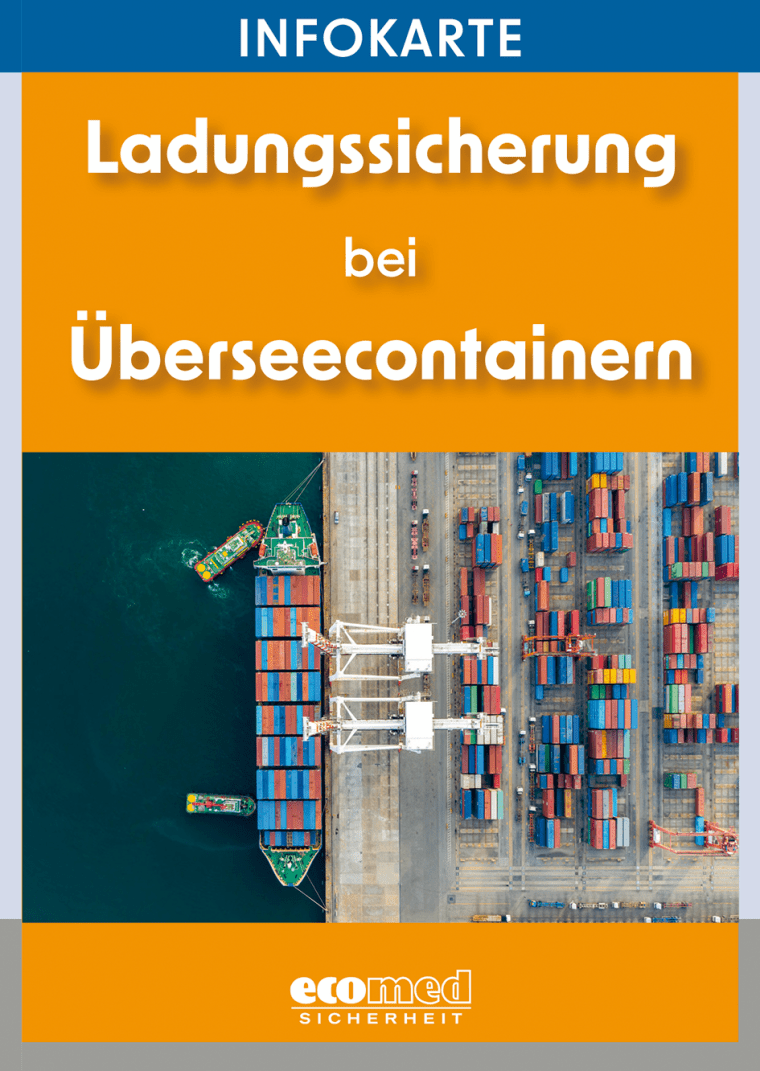
The ideal ‘cheat sheet’ for securing loads in overseas containers! 10 pages, format 10.5 x 14.8 cm Containers are inspected by the authorities in all seaports worldwide. Incorrectly loaded containers harbour a particularly high risk for the cargo, but also for the means of transport and the handling personnel. Due to the particularly high loads during a sea voyage lasting several weeks, the cargo must be carefully secured in accordance with the regulations. The most important information for loading CTUs can be found in this info card at a glance:Legal provisions - Forces at sea - What needs to be considered before loading? - Container superstructure, loads - How do I secure correctly? - Examples - Sealing Packaging unit 10 pieces Quantity prices on request
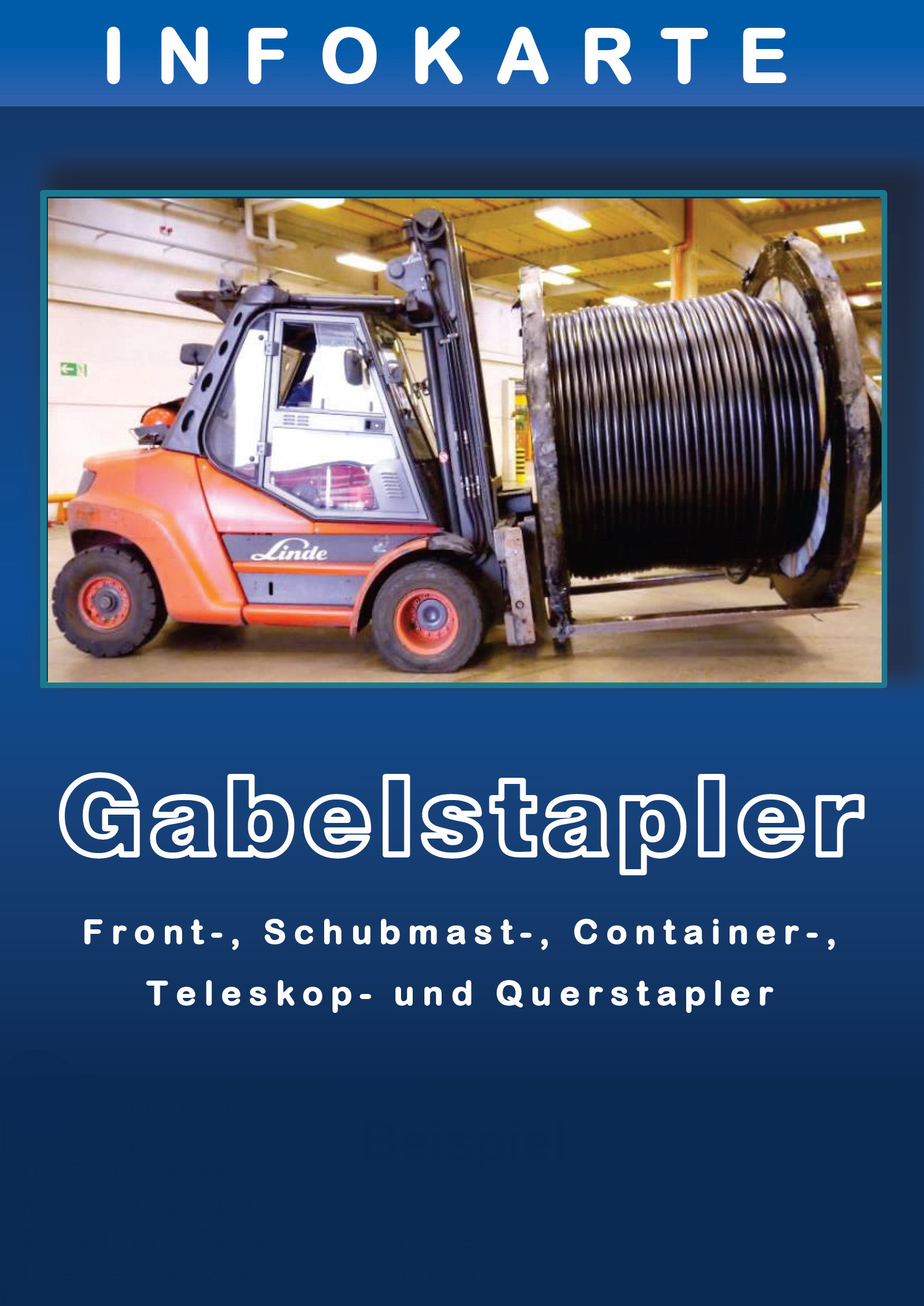
The ideal ‘cheat sheet’ for the operator of industrial trucks! 8 pages, format 10.5 x 14.8 cm A pictorial overview of what needs to be observed when operating a front, reach, container, telescopic or transverse forklift truck. - Trade association regulations - Laws and regulations - Instructions to be observed - Requirements for driving industrial trucks - Visual and functional check - Departure check - Parking of forklift trucks - Rules for driving and forklift drivers Packaging unit 10 pieces Quantity prices on request

Dangerous goods transport equipment checks: Say goodbye to the language barrier - communicate safely!As a shipper of dangerous goods, you are obliged to check whether the vehicle driver is authorised to drive dangerous goods and whether he has the equipment required by ADR before loading the truck (or filling tankers) with your dangerous goods. In addition to the vehicle and dangerous goods equipment, dangerous goods drivers must also have the necessary personal protective equipment with them during checks. But how do you communicate if the driver speaks little or no German? The practical ADR equipment check info card for drivers shows and names the 12 most important items of equipment in 26 languages:Bosnian, Bulgarian, Czech, Danish, Dutch, English, Estonian, Finnish, French, German, Greek, Hungarian, Italian, Latvian, Lithuanian, Dutch (as spoken in Belgium), Norwegian, Polish, Portuguese, Romanian/Moldovan, Russian, Serbian, Slovakian, Slovenian, Spanish, Swedish and Turkish.The terms in the various languages are labelled with the vehicle registration numbers of the countries in which the corresponding language is spoken. One look at the licence plate and one look at the info card - and you have the right term at hand. The named items of equipment are:- Fire extinguisher- Wheel chock - Shovel - Two self-standing warning signs - Eye rinsing liquid - Eye protection - Safety vest - Portable lighting device - Protective gloves - Emergency mask with filter - Duct cover - Collecting container Packaging unit 10 pieces Quantity prices on request
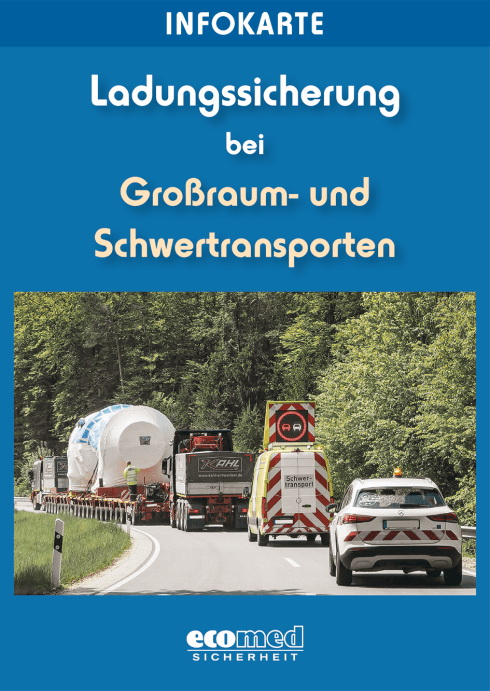
The ideal ‘cheat sheet’ for load securing ‘large and heavy goods transport’! 10 pages, format 10.5 x 14.8 cm 5th edition 2022 No oversized or heavy goods transport may be carried out without a valid licence. Incorrectly loaded vehicles (too wide, too high, too heavy) harbour a particularly high risk. Police checks still result in high offence rates. Fines and points in Flensburg are often the result. The info card on securing large and heavy loads shows you the most important things you need to consider when planning, handling and securing loads in the smallest possible space. On ten compact pages in fanfold format, it explains in concise sentences how loads can be properly secured and which lashing equipment is suitable. The calculation table and the calculation example comply with DIN EN 12195-1:2021. The info card provides information on approval and authorisation procedures, dimensions and weights to be observed and the labelling of the vehicle and load. It also clarifies in which cases administrative assistants with BF 4 vehicles and in which cases police escorts are required. Download info card ‘Load securing for oversized and heavy goods transport’ - Authorisation and permit procedure. Here you can download the latest versions of the application forms in accordance with RGST 2013 (fax procedure)and the VEMAGS® authorisation procedure (online procedure). You should always have these compact instructions to hand to ensure that you remember everything you need to know about load securing for oversized and heavy goods transport!   - 10 pages, fanfold format - Explains the correct use of lashing and auxiliary equipment - What does correct load securing look like? - Which regulations must be observed? - Information on authorisation and permit procedures - Dimensions and weights to be observed - Police escort yes or no? Packaging unit 10 pieces Quantity prices on request
